If you’ve ever been to a carnival and had the chance to enjoy a classic corn dog, then you know just how delicious they can be. But did you know that there are actually garden plants that look a lot like these tasty treats? There are several different types of plants out there that resemble everyone’s favorite concession stand snack. In this article, we’ll take a look at some of the most popular types of corn dog-looking plants and discuss how to care for them.
Common Cattails
The Common Cattail is a plant that looks like a corn dog with its long, cylindrical leaves. It grows in moist areas such as marshes and wetlands and can reach up to four feet tall. The best way to care for this type of plant is to ensure the water level around it remains consistent. If you’re unable to provide adequate water, you can also use a spray bottle with some sort of nutrient-rich solution.
Chenille Plant (Acalypha hispida)
The chenille plant is a flowering perennial native to tropical areas of the world. Its fuzzy, red-tinged leaves look just like a classic corn dog!
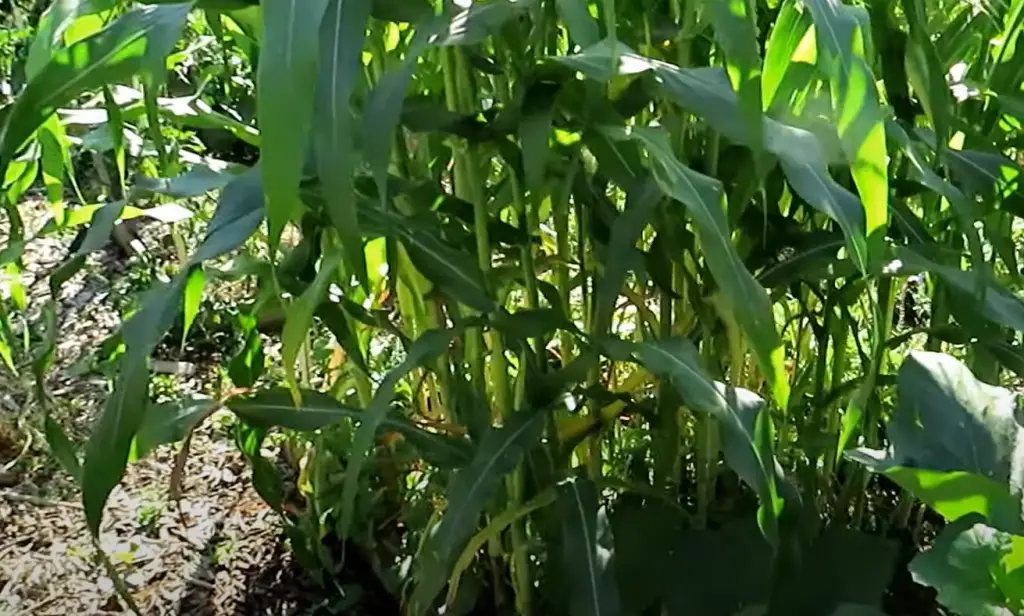
This plant grows up to 6 feet in height and produces flowers throughout the year. It needs plenty of bright light and warm temperatures in order to thrive, as well as regular watering.
Graceful Cattails
Graceful cattails are a type of plant that looks just like an oversized corn dog. These beautiful plants can be found in wetlands and marshes all over the world, so if you’re lucky enough to live near one, you should definitely take advantage! Graceful cattails have tall green stems that resemble hotdogs on sticks, complete with a fluffy, golden-brown top. They can reach heights of up to two meters and their vibrant colors make them a great addition to any garden.
When it comes to caring for graceful cattails, they’re actually quite easy to manage. They thrive in moist soil and need plenty of water, so make sure to keep them well-watered. They also like full sun exposure, so be sure to plant them in an area that gets plenty of direct sunlight. For optimal growth, fertilize your plants every two weeks or so with a balanced fertilizer.[2]
Prince’s Feather (Amaranthus hypochondriacus)
The Prince’s Feather plant is an annual ornamental flower that has bright red and green foliage. It grows quickly and can reach between three to five feet in height. This plant looks a lot like a corn dog with its spike-like flowers, which appear at the end of long stems. The leaves are even shaped like hotdog buns! To care for this plant, keep it in a sunny location and make sure to water it regularly.
Bastard Copperleaf (Acalypha wilkesiana)
Bastard copperleaf is an evergreen shrub that grows in tropical or subtropical regions. It has leathery leaves and clusters of small, red-colored flowers that look like corn dogs. This plant requires plenty of light and needs to be kept moist but not soggy. When watering this plant, make sure to use a pot with drainage holes to help prevent root rot.[1]
Pampas Grass (Cortaderia selloana)
This is one of the most recognizable plants that looks like a corn dog. Its tall, feathery plumes appear in shades of pink and white, making it an eye-catching addition to any garden. Pampas Grass can be used as an accent plant or grown in large clusters for a dramatic effect. Although Pampas Grass requires very little maintenance, you should keep in mind that it can become very large and is considered somewhat of an invasive species.[2]
Southern Cattails
One of the most common garden plants that look like corn dogs are southern cattails. These tall, grass-like plants have long stems and can grow up to six feet in height.
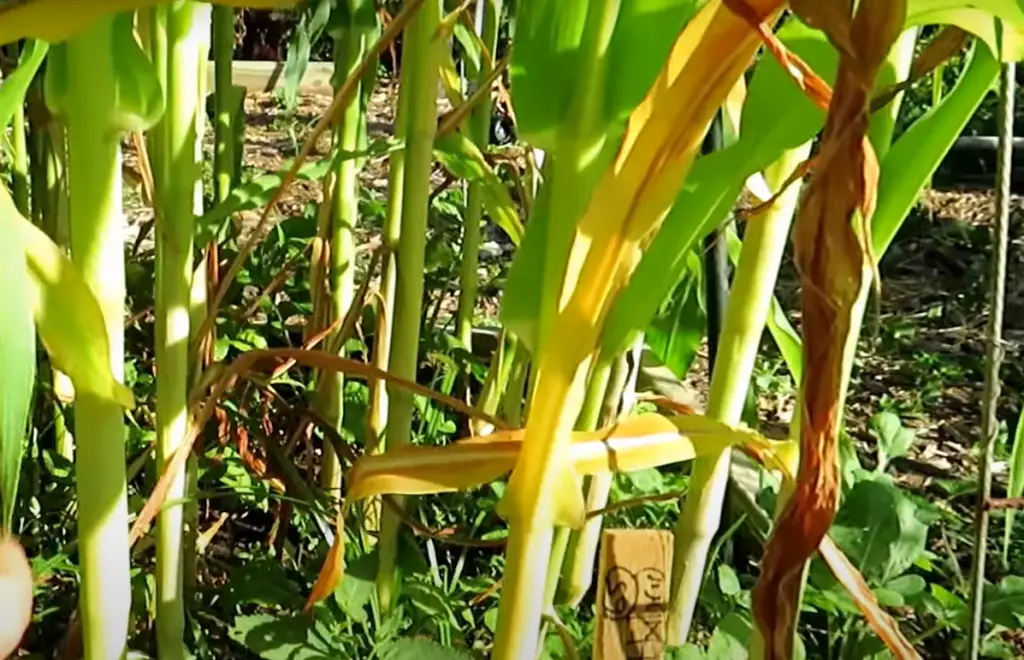
The leaves of the plant are narrow and pointed, and they produce small yellow flowers at the top. Southern cattails require plenty of sunlight but don’t need much water to survive, making them an ideal choice for gardens in drier climates.
Narrowleaf Cattails
The narrowleaf cattail is an aquatic plant that looks a lot like a corn dog. This type of cattail has long, thin leaves that are similar in shape and size to the traditional carnival food. It also produces small brownish-green flowers which look just like little corn dogs! The narrowleaf cattail can be found growing in marshy areas and ponds, and they make great additions to gardens that have water features.
Caring for narrowleaf cattails is very easy. They prefer moist soil and full sun, so be sure to keep the area around them watered regularly. The plants should also be fertilized once a year in order to stay healthy and strong.[1]
Alder Catkins (Alnus species)
Alder catkins are the most popular garden plants that look like corn dogs. These small, cone-shaped flowers can be found in many yards and gardens across the country. They usually grow on trees, shrubs, and hedges during late winter or early spring. Alder catkins come in a variety of colors ranging from yellow to reddish-brown and even black. As the flowers die off, they leave behind small fruits that look a lot like mini corn dogs![1]
Miniature Cattails
Miniature cattails are an interesting type of garden plant that closely resembles a corn dog. They have a long, slender stem with several leaves at the top that resemble the shape of a corn dog. Miniature cattails can be grown indoors or outdoors and require minimal care and maintenance. When planted in soil, they prefer warm, moist conditions with plenty of sun. For the best results, water them regularly and fertilize them once a month.
Quack Grass (Elytrigia repens)
Quack grass, also known as couch grass or twitch grass, is a perennial that grows in many regions around the world.
Quack grass produces light green flowers and its seed heads resemble small corn dogs. This plant is easy to care for and can thrive in most soils, however it prefers moist well-drained soils with lots of nutrients. Quack grass tends to spread quickly and can become invasive, so it’s best to contain the plant in landscaping blocks or other types of barriers.[1]Johnson Grass (Sorghum halepense)
Johnson Grass is a tall, hardy perennial grass that can reach heights of up to 6 feet when mature and has thin stems. The leaves are long and narrow, primarily blue-green in color but with yellow highlights. Johnson Grass produces large, silky white flowers from late summer to mid-autumn. It’s an excellent choice for gardeners looking for something that looks like a corn dog.
Giant Reed (Arundo donax)
The Giant Reed is a tall grass-like plant that can reach heights of up to 30 feet. It has long, narrow leaves and big flower heads that resemble corn dogs.
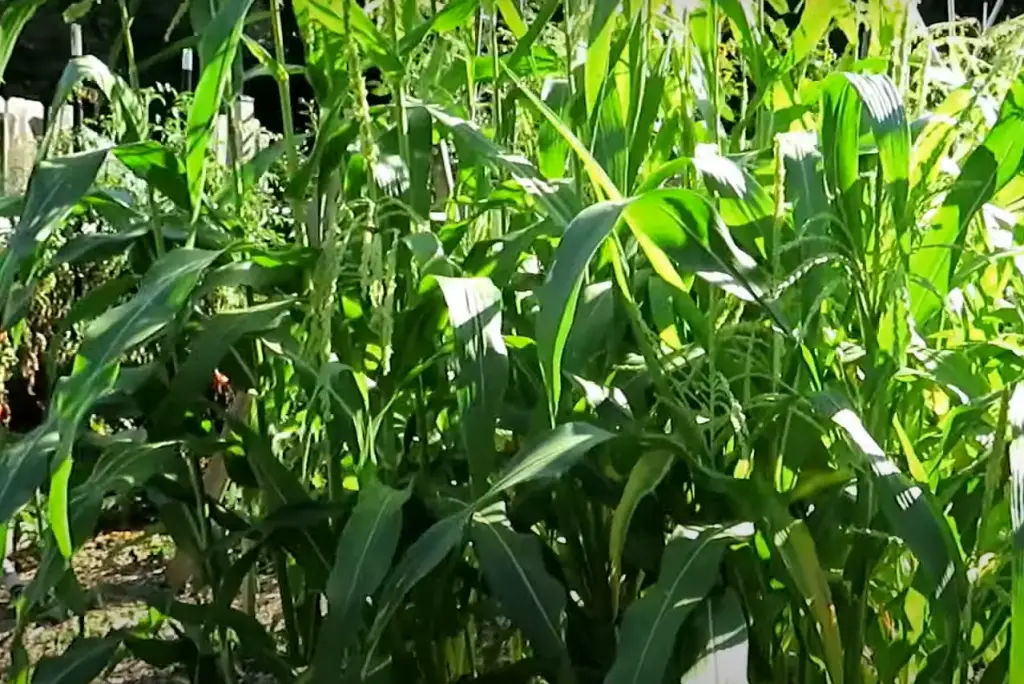
The Giant Reed grows best in warm climates with plenty of sun, but it can also be grown indoors if you provide enough light and humidity. To keep the plant looking its best, you’ll need to regularly prune it and water it on a regular basis.
Typha Minima
Typha minima, also known as dwarf cattail, is a perennial plant native to North America and parts of Europe. It can be found in both wetland and dry habitats and typically grows up to 3 feet tall with an overall mounded shape. The leaves are long and thin, resembling the shape of a traditional corn dog. It produces small flowers that look like green spikes on the top of the plant.
To care for Typha minima, water it regularly and fertilize every two weeks. It prefers full sun, but can also survive in partial shade. In cold climates, it’s important to protect the rhizomes with a thick layer of mulch during the winter months.[3]
Typha Domingensis
Typha domingensis, more commonly known as cattail, is a tall plant with unique-looking flowers that resemble corn dogs.
It grows best in wet areas such as marshes and ponds but can also survive in well-drained soil. It’s an easy plant to care for, requiring minimal maintenance and water requirements.[3]Typha Laxmannii
Typha laxmannii, or the ‘Corn Dog Plant’, is an aquatic plant that can be found in ponds, lakes, and slow moving streams. It gets its name from the fact that when viewed from afar it looks a lot like a corn dog! This plant has long leaves that are up to 3 feet in length. When mature, the plant produces narrow brownish-green flower heads that look like the classic corn dog shape.
Typha Angustifolia
Typha Angustifolia, also known as narrow-leaved cattail, is a wetland plant that has long brown and green cylindrical stalks which resemble corn dogs.
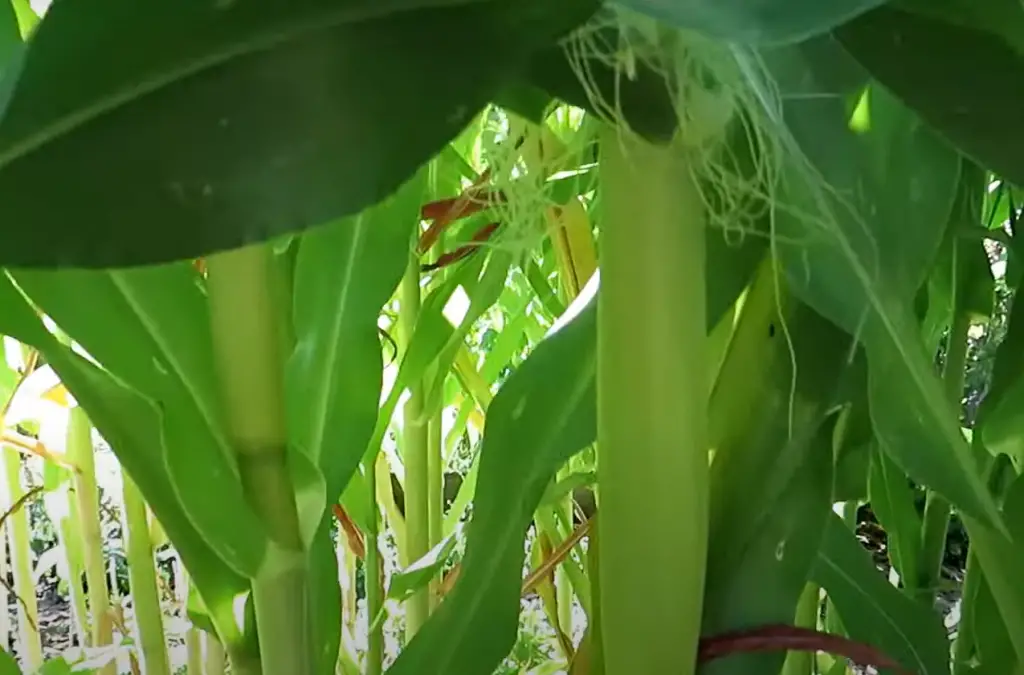
This plant likes to be grown in moist soil near ponds, lakes or streams. They will thrive when given full sun but will still grow in partial shade. Typha Angustifolia can be propagated by dividing the root clumps in late winter or early spring. The flower heads of this plant can be harvested and used in flower arrangements.[3]
Typha Latifolia
Also known as the Cattail, Typha Latifolia is a tall-growing aquatic plant. It has long, thin leaves that resemble the shape of a hotdog and are covered in a fuzz-like texture. The flowers have a bright yellow color which resembles the mustard commonly used to top off corn dogs. These plants need plenty of water and will thrive in moist areas, like a shallow pond.
FAQ
What water plant looks like a corndog?
A number of garden plants look like corndogs, including Alder Catkins (Alnus species), Miniature Cattails, Quack Grass (Elytrigia repens), Johnson Grass (Sorghum halepense), Giant Reed (Arundo donax), Typha Minima, Typha Domingensis, Typha Laxmannii, Typha Angustifolia, and Typha Latifolia.
What is a wild corndog?
A wild corndog is a plant that looks like a traditional corn dog. Some plants, such as Alder Catkins (Alnus species), Miniature Cattails, Quack Grass (Elytrigia repens), Johnson Grass (Sorghum halepense), Giant Reed (Arundo donax).
Is A cattail Edible?
Yes, cattails are edible. The young shoots, stems, and roots of the plant can be eaten raw or cooked. They have a mild flavor similar to cucumbers and can be used in salads or as an ingredient in soups and stews.
What is the difference between a pogo and a corn dog?
A pogo is a type of sausage-shaped hot dog that is deep-fried in batter and served on a stick. A corn dog, on the other hand, is a hot dog that has been dipped in sweet cornmeal batter before being fried. While both snacks are similar in shape and size, they differ in terms of ingredients and preparation. Pogo’s are typically made with a pork and beef blend, while corn dogs are usually made from 100% beef. Additionally, the batter used to make a pogo is usually thicker than that of a corn dog. Thus, giving each snack its own unique flavor and texture.
What do Canadians call corn dogs?
The snack commonly known as a “corn dog” in the United States is referred to as a “beavertail” in Canada. This is because the fried dough resembles the tail of a beaver, which is an iconic Canadian animal. Beavertails are found at fairs and carnivals across Canada, served with traditional condiments such as ketchup and mustard. They are also served with a variety of sweet toppings such as cinnamon and sugar, chocolate sauce, honey, and whipped cream.
What do Australians call corn dogs?
In Australia, the snack commonly known as a “corn dog” in the United States is referred to as a “dirty dog.” This may be because of its appearance – the batter-covered hotdog looks like it has been rolled around in dirt!
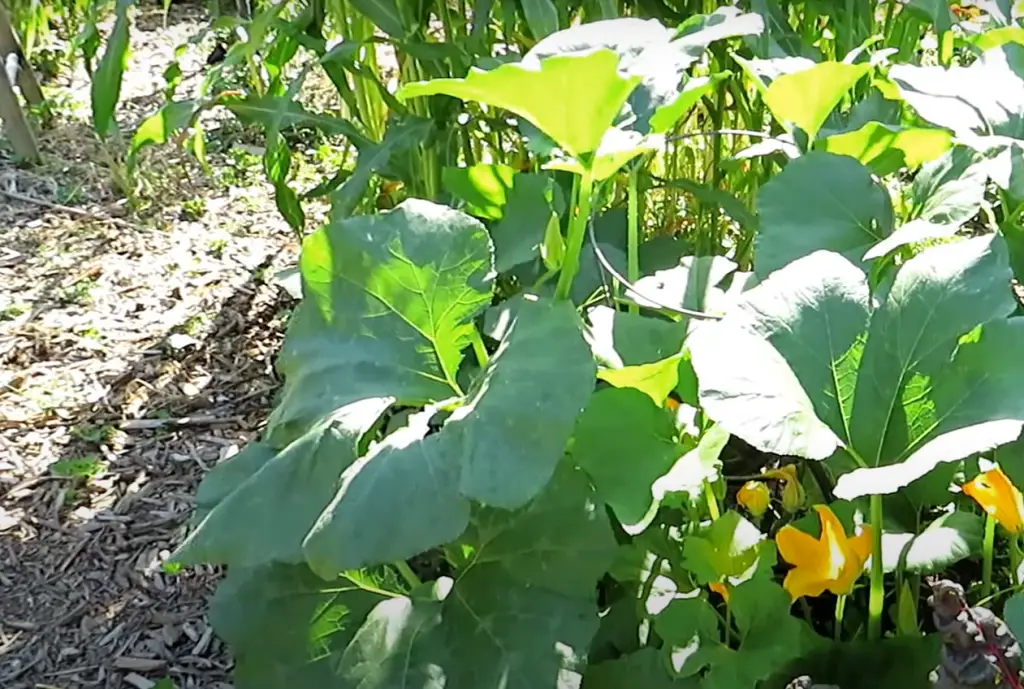
Dirty dogs can be found at fairs and carnivals across Australia, served with traditional condiments such as ketchup and mustard. They are also served with a variety of sweet toppings such as honey, caramel sauce, whipped cream, and chocolate-hazelnut spread.
What do they call corn dogs in Britain?
The snack commonly known as a “corn dog” in the United States is referred to as a “toad in the hole” in Britain. This name comes from the fact that the hotdog looks like it’s swimming inside the batter-covered dough, just like a toad swimming in a pond. Toads in the hole can be found in pubs and chip shops across Britain, served with traditional condiments such as brown sauce or HP sauce. They are also served with a variety of sweet toppings such as honey, caramel sauce, or even beans!
What is a German corn dog?
A German corn dog is a variation of the classic snack. This version consists of a sausage dipped in a batter made from beer, eggs, and flour before being fried and served on a stick. The resulting snack has a unique flavor due to the beer used in the batter. German corn dogs can be found at fairs and carnivals across Germany, served with traditional condiments such as ketchup and mustard. They are also served with a variety of sweet toppings such as honey, caramel sauce, or vanilla glaze.
What is a Korean corn dog called?
The Korean version of the classic snack is called a “hotteok” or “hoddeok.” This version consists of a sweet pancake-like dough that is filled with either fruits, nuts, or vegetables and then deep-fried in oil before being served on a stick. Hotteoks can be found at street markets and food stalls across Korea, served with traditional condiments such as ketchup and mustard. They are also served with a variety of sweet toppings such as honey, cinnamon sugar, or condensed milk.
What is a Seoul corn dog?
A Seoul corn dog is a variation of the classic snack. This version is made with a hotdog that is wrapped in sweet dough and deep-fried before being served on a stick. The resulting snack has a unique flavor due to the sweetness of the dough used to wrap the hotdog. Seoul corn dogs can be found at street markets and food stalls across Seoul, served with traditional condiments such as ketchup and mustard. They are also served with a variety of sweet toppings such as honey, condensed milk, or chocolate sauce.
Useful Video: How to Grow Corn Successfully in Small Garden Spaces: Plant in Squares Not Rows – Here is Why!
Conclusion
Garden plants that look like corndogs are a unique and interesting addition to any outdoor garden or landscape. With so many different variations of this popular snack, from Korean hotteoks to German corn dogs, you can easily find a variety of plants to suit your needs and preferences. Whether you’re looking for something edible or just something pretty, there is surely a plant that looks like a corndog to fit your needs. No matter which you choose, you’ll be adding some unique flavor and interest to your garden or landscape!
References:
- https://www.plantician.com/plants-that-look-like-corn-dogs/
- https://www.fallsgarden.com/plants-that-look-like-corn-dogs-and-cornstalks/
- https://gardreen.com/corn-dog-looking-plant/










Leave a Reply
View Comments